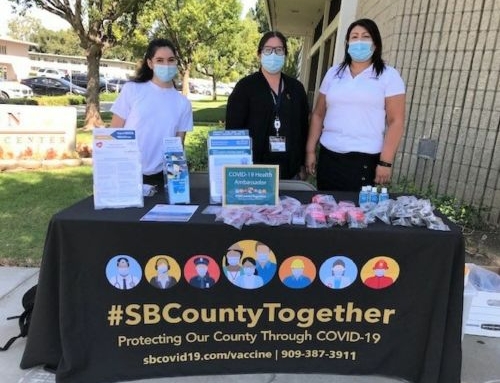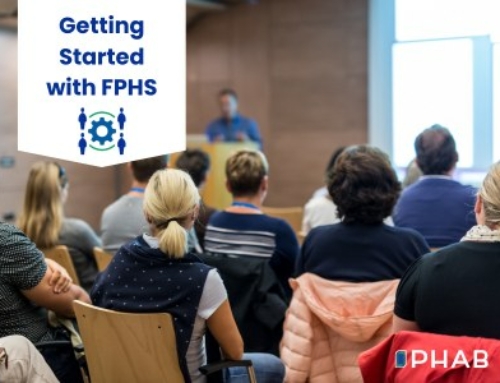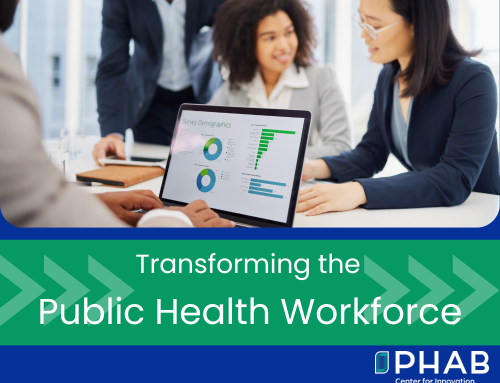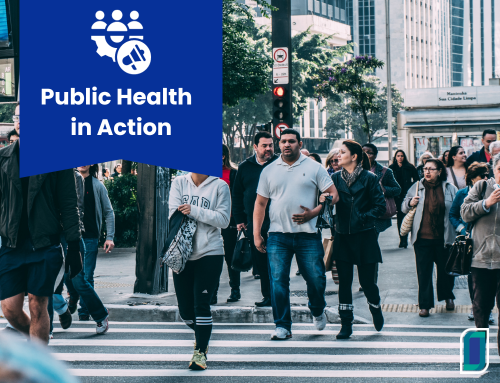Snapshot
To address pressing public health issues, health departments are tasked with identifying new ways of tackling problems – innovating to improve community health. Public health innovation can be a program that is new or emerging in the field; that is, adoption is not yet widespread. Greene County Public Health (GCPH), OH, was faced with a challenge during the COVID-19 pandemic – how to continue their efforts around harm reduction in the middle of a pandemic?
GCPH, a PHAB accredited health department, serves a suburban and rural county with a population of about 169,000 people. GCPH implemented an innovation in response to the rise in the number of unintentional opioid overdose deaths in their community. Through numerous initiatives, including the state’s Project DAWN Program, GCPH has been working to decrease the number of deaths due to opioid use. In partnership with community organizations, they have provided educational resources, syringe exchange programs, and naloxone distribution to those at risk of overdose. When the COVID-19 pandemic reached Ohio, most harm reduction services and in-person Project DAWN trainings in Greene County were cancelled. The health department needed to shift quickly to continue their efforts, which led to innovation in their harm reduction programming.
In response to the pandemic, GCPH made changes to their SafeTrade Syringe Service Program (SSP), switched to a mail order naloxone program, increased their social media outreach, provided Project DAWN Live online classes, and developed peer recovery supporters. They are also working with the local jails to develop a program to provide education to inmates so that naloxone kits may be mailed to their residence when they are released. GCPH was not the first to implement some of these approaches, but this innovative approach to harm reduction is changing the way they serve their community.
Problem Addressed
Ohio has the fourth highest opioid-related overdose death rate in the United States and Greene County, Ohio has the fourth highest rate in the state, impacting the health and well-being of many individuals and families in the community1. From 2014-2019, Greene County, Ohio experienced an average age-adjusted rate of unintentional overdose deaths of 30.5/100,000. In response to this public health crisis, the health department has implemented multiple harm reduction services and programs.
Unfortunately, the county overdose rate increased over the last year, with over 40 deaths in 2019, 43 deaths in 2020 and more expected in 2021. (2021 OD Death data will not be confirmed until June 2022. However, 599 overdose reversals have been reported from January to November 2021 due to successful naloxone distribution.
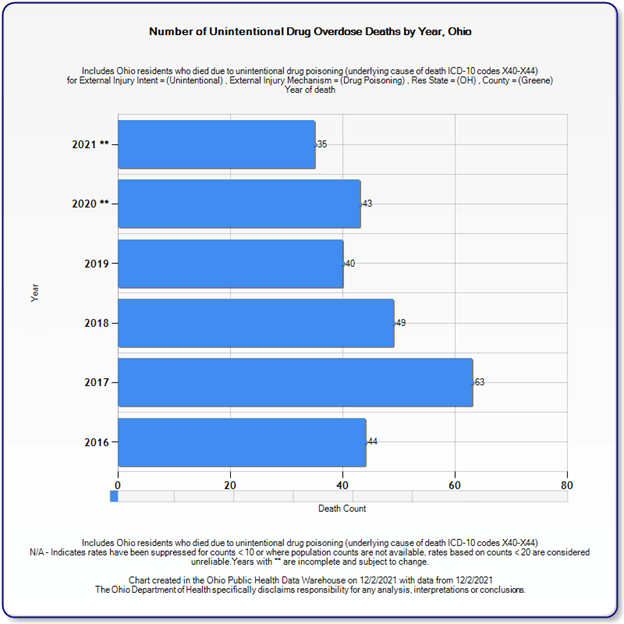
Innovation Summary
-
Through an Integrate Naloxone Access and Infrastructure Grant, GCPH launched Project DAWN (Deaths Avoided With Naloxone), a network of opioid overdose education and naloxone distribution programs coordinated by the Ohio Department of Health. Before the COVID-19 pandemic, they worked on the ground, meeting people where they were to educate and provide resources to prevent opioid overdose and promote harm reduction.
During the pandemic, GCPH shifted their education and delivery model. Education became virtual; interested individuals could access an online training and receive naloxone via mail. This training is available to anyone that lives or works in Greene County. This new initiative has been ideal during the pandemic to safely continue harm reduction work with low contact. It has also increased the community’s access to resources because training can be done from home at any time.
Equity is a major consideration in GCPH’s efforts. GCPH made several adaptions to their delivery model to continue to provide resources when in person events were no longer possible. The homeless shelter Director was provided naloxone and safety information and the shelter’s address could be used to hold mail for up to 90 days for those that wanted to participate in the online training. The shelter does not provide residents without devices with computer access, but GCPH staff communicates with the Director. Recently, they developed a plan for the Director to pick up a box of 12 Narcan whenever she needs it so that she can distribute the Narcan to residents as a “Lay Distributor.” Naloxone was provided to a hotel near SafeTrade Syringe Service Program that was hosting People Who Use Drugs without housing: hotel staff were provided naloxone, and the hotel was able to accept mail.
In addition, GCPH has been working hard to do more outreach in high overdose areas in Greene County. For example, they set up Narcan distribution tables at a local food bank, a church recovery meeting, and at a public library. They also have someone in the jail who works for TCN Behavioral Health who is willing to do the mail order program for those who are incarcerated for drug charges; this is related to their next innovative project, which is working with behavioral health counselors to implement a program in local jails where inmates can participate in the online naloxone training and be mailed a naloxone kit when they are released.
Outcomes and Impact
In 2020, 2,000 naloxone kits were distributed by GCPH, including 193 by mail. By the end of November 2021, 369 kits had been distributed by mail. Kits that are not distributed by mail have primarily been distributed through partner agencies including TCN Behavioral Health, DeCoach Rehabilitation Centre, SafeTrade Syringe Service Program, FISH Food Pantry, local churches, Greene County Public Libraries, homeless shelters, local universities, recovery centers, and more.
Data from the online training shows that 25% of participants attended the online training and requested a kit because they had witnessed an overdose.
Challenges/Barriers
A major barrier in GCPH has been the lack of a quick response team; this is currently in development with local partners. This team will work to identify hotspots in the community, oversee a Harm Reduction Sub-Committee, and more.
Transportation is another barrier to harm reduction work; while the GCPH virtual naloxone training and mail order delivery service addresses this, staff recognize that the in-person engagement and question and answer opportunity is lost.
Access to internet is also a barrier community members may face in accessing resources, as the entire population does not have access.
Lessons Learned
Through one of their grants, GCPH learned about a targeted evaluation program. This allows the health department to better track who has received a mail order so far and more about who that person is. A goal is to reach people that will use the naloxone on themselves or family. GCPH has also learned more about the specific communities and zip codes that need the most support so that they can target their resources to areas with the most need.
Funding and Sustainability
In partnership with the Ohio Department of Mental Health and Addiction Services, the Ohio Department of Health was allocated funds from the federal State Opioid Response (SOR) Grant to develop the Integrated Naloxone Access and Infrastructure (IN) Grant. Initial funding for this project was made possible through the Integrated Naloxone Access and Infrastructure (IN) Grant. The current IN Grant cycle will end August 31, 2022 and is expected to continue for years to come. GCPH also received funding from the CARES Act, which provided naloxone they were able to give to a recovery center.
1 Ohio Department of Health. Unintentional drug overdose deaths of Ohio residents and average crude and age-adjusted death rates per 100,000 population by county. November 3, 2021.
Contributors
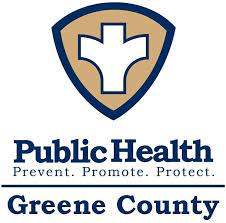
For more information, please contact Melody Kingsley, Health Educator, Greene County Public Health at [email protected]
